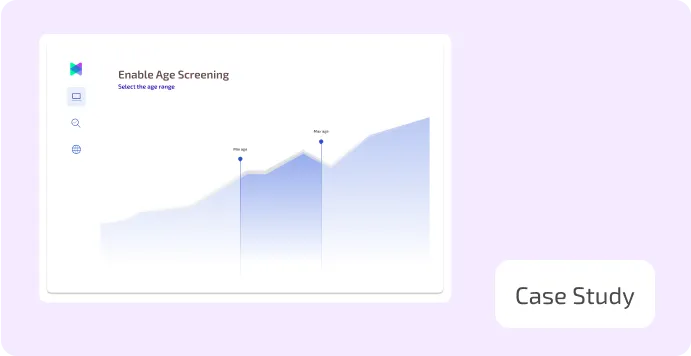.webp)
Published on
November 9, 2025
How to Spot Crowdfunding Scams and Avoid Fraud
In this story

Accelerate AML Compliance: Meet Regulatory Demands with 80% Less Setup Time
.svg)
.svg)
✨ AI Overview Summary
Crowdfunding scams refer to fraudulent campaigns whereby scammers take advantage of people's goodwill by raising donations under fake pretences. They come in various forms, including rogue charity campaigns and deceptive product campaigns, and have increasingly made use of social media and popular crowdfunding sites such as GoFundMe, Kickstarter, and Indiegogo. These scams, apart from causing financial loss to the contributors, are also utilized for the purpose of money laundering, and hence come with severe compliance and reputational risks for the sites and financial intermediaries.
To not fall victims, both individuals and companies should conduct due diligence by checking creators of campaigns, observing use of funds, and making use of trusted platforms featuring strong AML controls. Money centres along with crowdfunding platforms can contain risks by increasing KYB/KYC authentication, machine-based transaction surveillance, and real-time compliance automation. Through the integration of cautious donor conduct and auto-regulatory technology remedies, the players can reduce fraud, provide transparency, and retain confidence within the fast-growing crowdfunding system.
Crowdfunding has changed the way that ideas get off the ground bringing innovators, entrepreneurs, and idealists together with fans worldwide. From gadgets to causes, millions of people contribute each day towards projects they care about most. With this added opportunity, though, comes a unfortunate side effect: scammers exploiting trust and excitement that crowd-funding platforms are built upon.
Fake campaigns, deceptive promises, and vanishing creators have cost backers millions in recent years. Figuring out how to detect the red flags of a scam is not only a good idea but a necessity. We're about to discover how scams work, how to detect most typical red flags, and the best way to safeguard your finances and back valid, honest projects.
What are Crowdfunding Scams?
Crowdfunding scams are misleading investment ventures that are designed to deceive individuals to contribute or invest in fraudulent endeavours. Scammers who engage in such scams often rely on platforms that are widely renowned for developing misleading stories, videos, or images that lure users into considering such investment endeavours as trustworthy. They might include scams such as fraudulent charities, causes, products, or business concepts that fundamentally involve raising money illegally.
What’s deceptive about crowdfunding scams, really, is that they often resemble true crowdfunding efforts seamlessly. It’s not uncommon for a supporter to respond to a heartwarming or perhaps a truly innovative concept, just to realize after that they’ve been scammed as no effort had been made by the individuals managing such a crowdfunded project to carry out that which was initially promised.
Real-World Crowdfunding Scams
A number of high-profile cases underscore both scope and sophistication of crowdfunding scams. These incidents show how investors and platforms can also fall into this trap.
1. The Coolest Cooler Campaign
A giant Kickstarter campaign pulled in more than $13 million for a multifunctional cooler. Even with huge support, almost none of the supporters received the product. Money was lost to mismanagement, and the campaign eventually failed, leaving thousands of investors out of pocket. Although not a typical money laundering case, it demonstrated that inadequate oversight could conceal fraudulent mismanagement.
2. The “We Build the Wall” Scandal
A U.S. crowdfunding effort had earned more than $25 million to support a private border wall initiative. Later, they were indicted for improper use of funds on personal matters. The matter highlighted just how simple it is for full-scale crowdfunding fraud to take place disguised in the name of legitimate social or political causes.
3. Money Laundering Through Fake Charity Campaigns
In many jurisdictions, authorities have found crowdfunding money laundering schemes under the guise of charities or disaster relief funds. Organized criminals reserved faux donation drives to recycle dirty proceeds, disguising them as clean contributions. Many such drives bid on an emotional narrative to solicit quick donations, which are promptly withdrawn and money-laundered via many accounts.
These scenarios represent a vital reality: even well-meant sponsors and moderated platforms can become complicit to schemes of fraud or money laundering unless compliance controls are properly instituted.
Understanding Crowdfunding Risks
Crowdfunding risks are not just financial losses. For platforms, investors, and regulators, they can have resounding reputational and legal consequences.
1. Anonymity and Limited Verification
Most crowdfunding sites have minimal verification. Scammers abuse pseudonymous accounts or stolen credentials to create fake accounts or donate to fraudulent accounts.
2. Cross-Border Complexity
Crowdfunding can happen anywhere. You can raise money from thousands of contributors across multiple jurisdictions, making AML (Anti-Money Laundering) monitoring and compliance enforcement harder.
3. Regulatory Gaps
In contrast to banks and payments providers, most crowdfunding sites are not fully regulated by AML across all nations. This variance makes it easier for fraudsters to move money undetected.
4. Data Fragmentation
Without internal transaction monitoring systems, sites will lose sight of suspicious activity patterns, such as small repetitive contributions made by linked accounts or rapid withdrawal of funds.
5. Reputational Damage
Only one case of crowdfunding fraud can wipe out the trust in a platform. For reputable companies, a tie to money laundering or scams can result in regulatory actions and long-term loss of credibility.
Comply quickly with local/global regulations with 80% less setup time
.svg)
.svg)
How to Avoid Crowdfunding Scams
Crowdfunding is still a great innovation toolbox, but investors and donors must be vigilant. Here are ways individuals can protect themselves:
1. Research the Creator or Company
Check the identity of the organizers, social activity, and their previous works. Look for transparent communication, trustworthy posts, and verifiable registration information for their business.
2. Check for Unrealistic Promises
Be wary of appeals that promise huge returns or revolutionary products with thin evidence. Fraudsters commonly appeal to hype and sentiment to drive quick contributions.
3. Follow the Money
All campaigns should reveal how money will be spent and report regular expenditures. Failure to have such information at hand should be considered as a red flag.
4. Use Trusted Platforms
Select reputable crowdfunding sites with a clear refund policy, AML processes, and a paid proof-of-payment verification.
5. Stay Informed
Keep up with alerts on ongoing or suspected crowdfunding frauds issued by regulators, watchers, and consumer protection agencies.
Resources for Reporting Crowdfunding Scams
Scam reporting assists in protecting others and aids worldwide efforts against financial wrongdoing. Listed below are primary resources for reporting scams:
1. United States:
- Federal Trade Commission (FTC): Report scams, phishing, and identity theft at ReportFraud.ftc.gov. Keep emails, receipts, or messages as evidence.
- Securities and Exchange Commission (SEC): Report investment scams and securities fraud online. Include transaction details for faster action.
2. United Kingdom:
- Action Fraud: Report fraud, cybercrime, and phishing online or by phone. Save documentation of any suspicious messages or payments.
3. European Union:
- European Consumer Centre Network (ECC-Net): Assists with cross-border consumer fraud and online scams. Submit proof of purchase or communication with your complaint.
- National Financial Intelligence Units (FIUs): Each EU country handles money laundering and financial crime reports. Provide clear transaction details to support investigations.
Crowdfunding sites themselves usually have integrated “Report” functions or contact forms to directly report suspicious campaigns.
3 Strategies to Manage Crowdfunding Risks
Proactive detection and risk control are critical to financial institutions and compliance professionals to fend off crowdfunding money laundering and crowdfunding fraud.
1. Implement Enhanced Due Diligence (EDD) and KYB
Partnerships and partner companies must conduct vigorous Know Your Business (KYB) and Know Your Customer (KYC) checks on both contributor and campaign creators. Auto verification software can verify identities, business registrations, and beneficial structures in real time.
FOCAL KYB solution allows companies to identify high-risk entities early, authenticate ultimate beneficial owners (UBOs), and conduct ongoing screening against international sanctions and watchlists, all key to keeping illicit campaigns off the air.
2. Deploy AML Transaction Monitoring
High-end transaction monitoring allows to identify suspicious crowdfunding behaviours, including:
- Multiple small payments from linked accounts
- Contributions from high-risk jurisdictions
- Rapid fund withdrawals post-campaign
- Discrepancies between stated purpose and fund use
AI-learning AML platforms, such as those found in FOCAL’s suite of RegTech, enable companies to process intricate data patterns, identify anomalies, and pass up high-risk cases quickly.
3. Adopt Continuous Compliance and Reporting Automation
As regulations are developing, companies are required to have flexible compliance structures. Embedding RegTech automation lowers manual work, raises the value of audits, and maintains regulatory consistency across borders.
FOCAL's combined platform facilitates compliance processes, such as regular reviews, suspicious activity reports (SARs), and continuous risk analysis, keeping companies ahead of regulatory developments and preventing crowdfunding cons prior to their expansion.
What’s next for Crowdfunding Compliance
As international regulators strengthen AML and counter-terrorist financing (CTF) requirements, crowdfunding sites and financial intermediaries will be under closer scrutiny. The European Union’s Crowdfunding Regulation, for instance, now obliges platforms to conduct due diligence on investors and project owners. Analogous developments are taking place throughout the U.S., U.K., and Asia-Pacific.
Compliance officers will therefore need to consider crowdfunding regulation not as a hassle but a strategic advantage. Sites that integrate transparent, automated risk controls will not just safeguard investors but also cultivate the credentials necessary to thrive in a trustworthy economy.
Conclusion
Crowdfunding has not only changed how innovation is funded but also transformed how fraud activities and money laundering can happen. Same accessibility that gives power to startups gives power to criminals.
Understanding the risks of crowdfunding and putting in place robust AML and KYB protocols is critical to protecting both investors and the stability of the financial infrastructure.
By utilizing sophisticated compliance technologies such as FOCAL, companies can track transactions in real-time, confirm business legitimacy, and avert crowdfunding frauds that can spoil the reputation of this crucial digital environment.
FAQ:
Q1. What are crowdfunding scams?
Crowdfunding scams are fake or deceptive campaigns created to steal money or misuse raised funds.
Q2. Can crowdfunding be trusted?
Yes, when done on reputable platforms with verified creators and transparent projects.
Q3. What are the five biggest financial scams?
Ponzi schemes, phishing scams, investment fraud, identity theft, and crowdfunding scams.
Q4. Can you actually make money from crowdfunding?
Yes, but only if you launch a legitimate campaign or invest carefully in verified projects.
Streamline Compliance: Achieve 80% Faster Setup for Fraud Prevention
.svg)
.svg)

How Aseel reduced onboarding time by more than 87% using FOCAL
Learn how FOCAL empowered Aseel to achieve new milestones.
.svg)
.svg)
Mastering Fraud Prevention: A Comprehensive Guide for KSA and MENA Businesses
51% of organizations fell victim to fraud in the last two years, don't be caught off guard, act proactively.
.svg)
.svg)
Featured blog posts
.svg)
AI-Driven Precision in Fraud Risk and AML Compliance
.svg)
.svg)

.svg)
.png)






.webp)



.svg)

_FastestImplementation_Small-Business_GoLiveTime.png)

_HighPerformer_Small-Business_HighPerformer.png)
_Leader_Leader.png)



%20(1).webp)